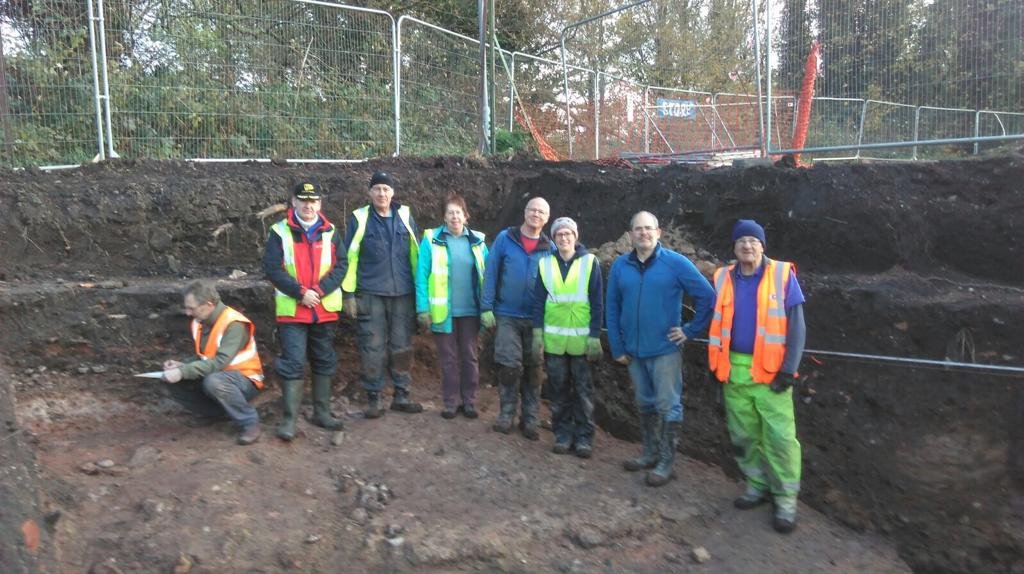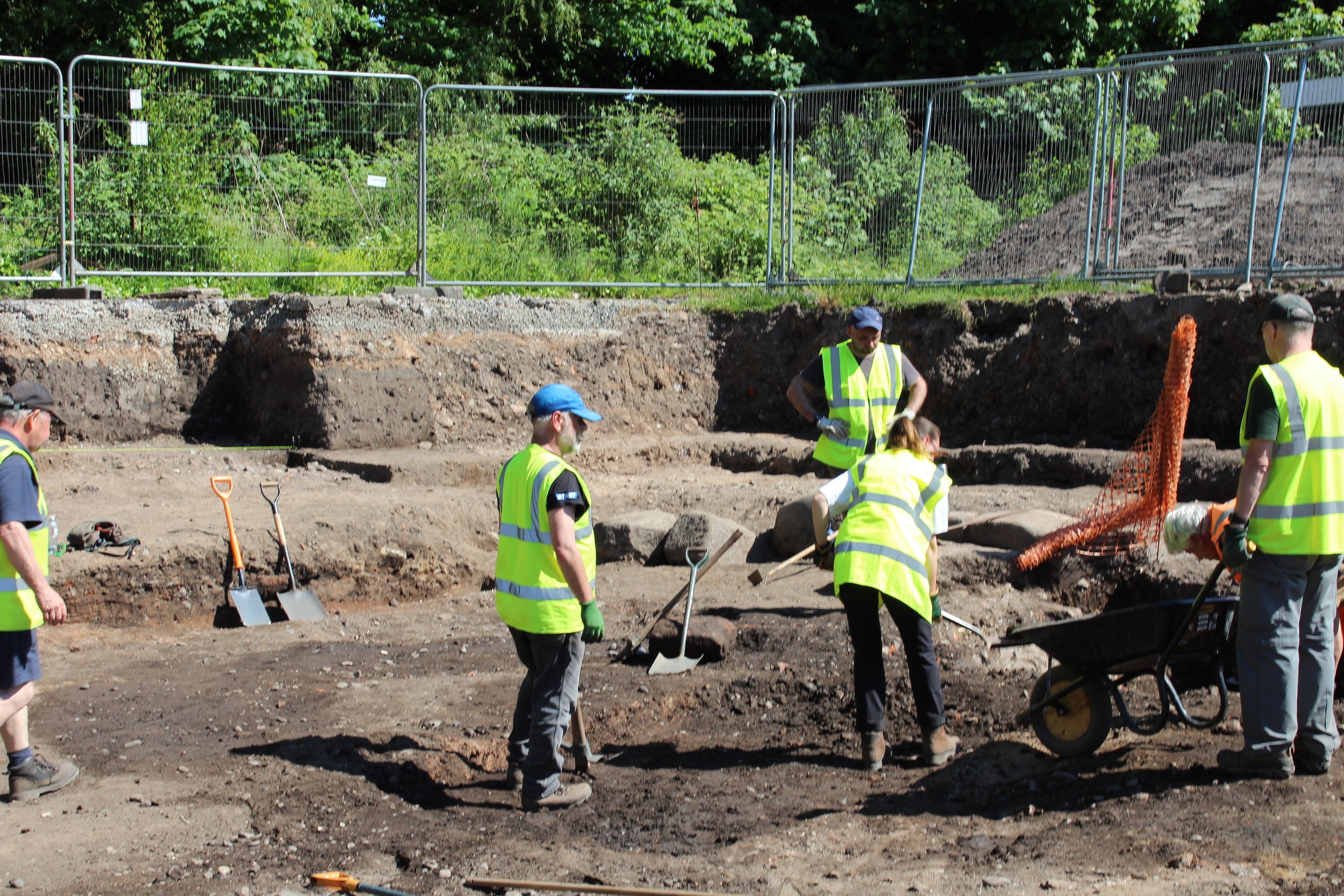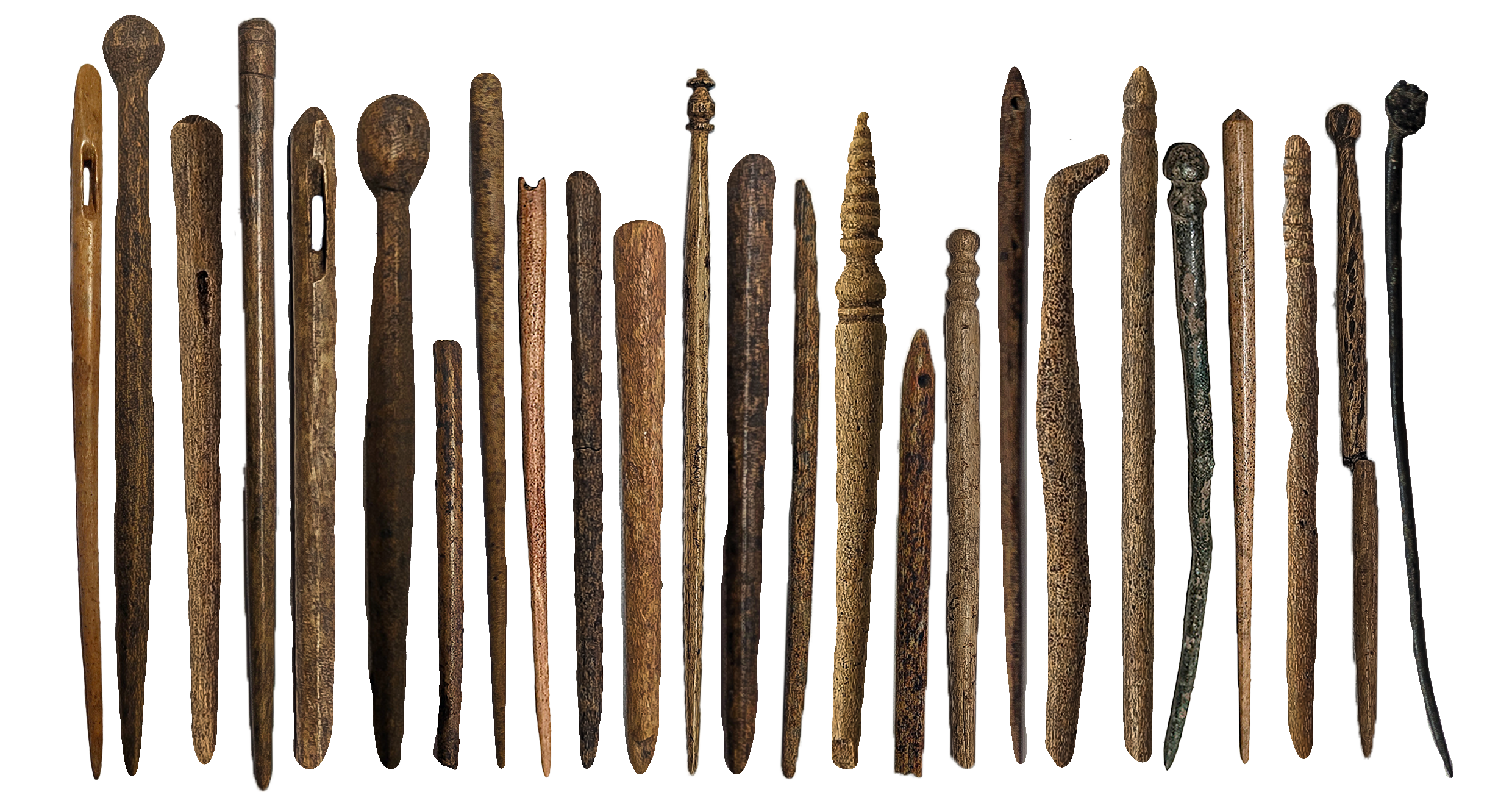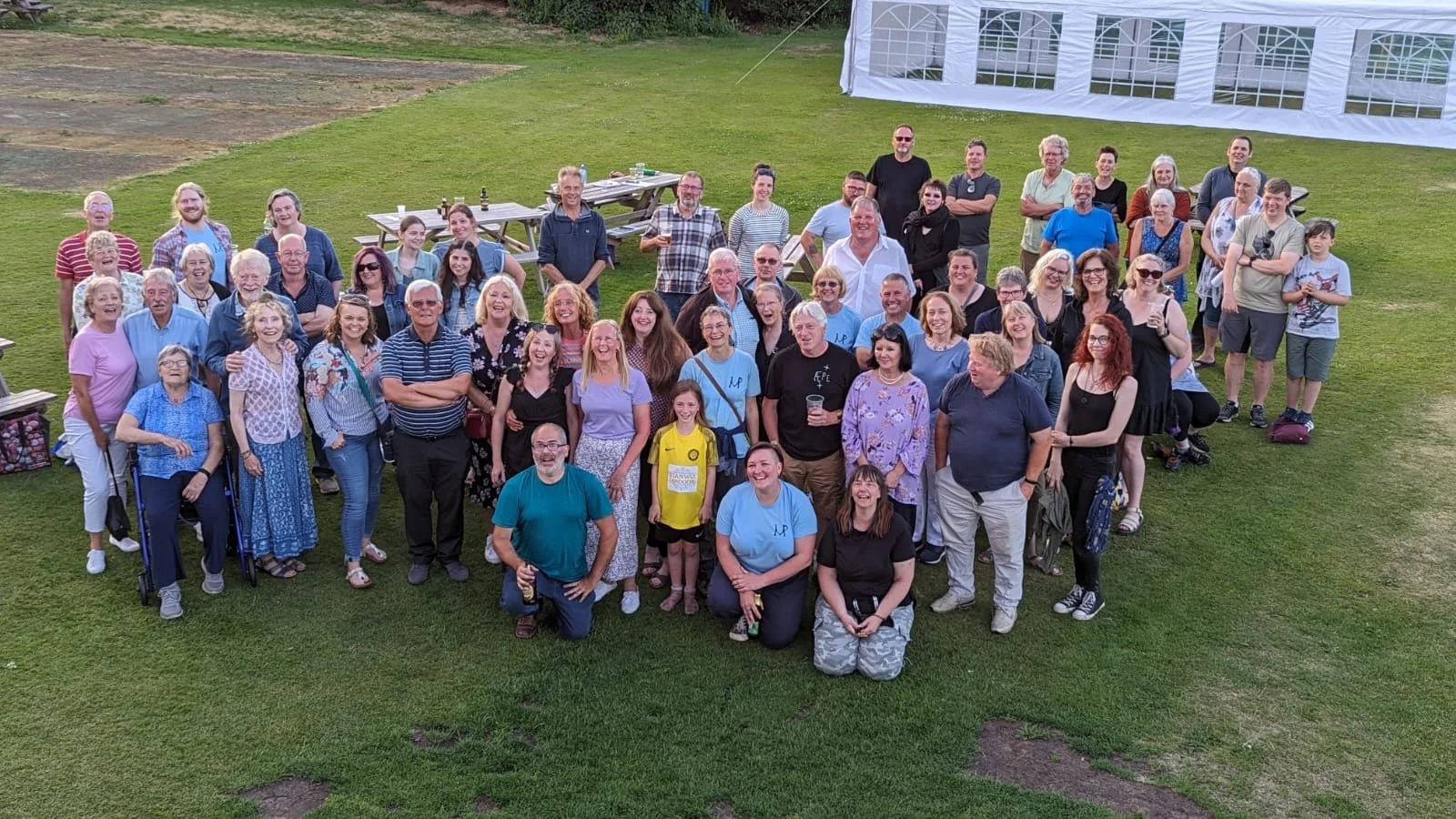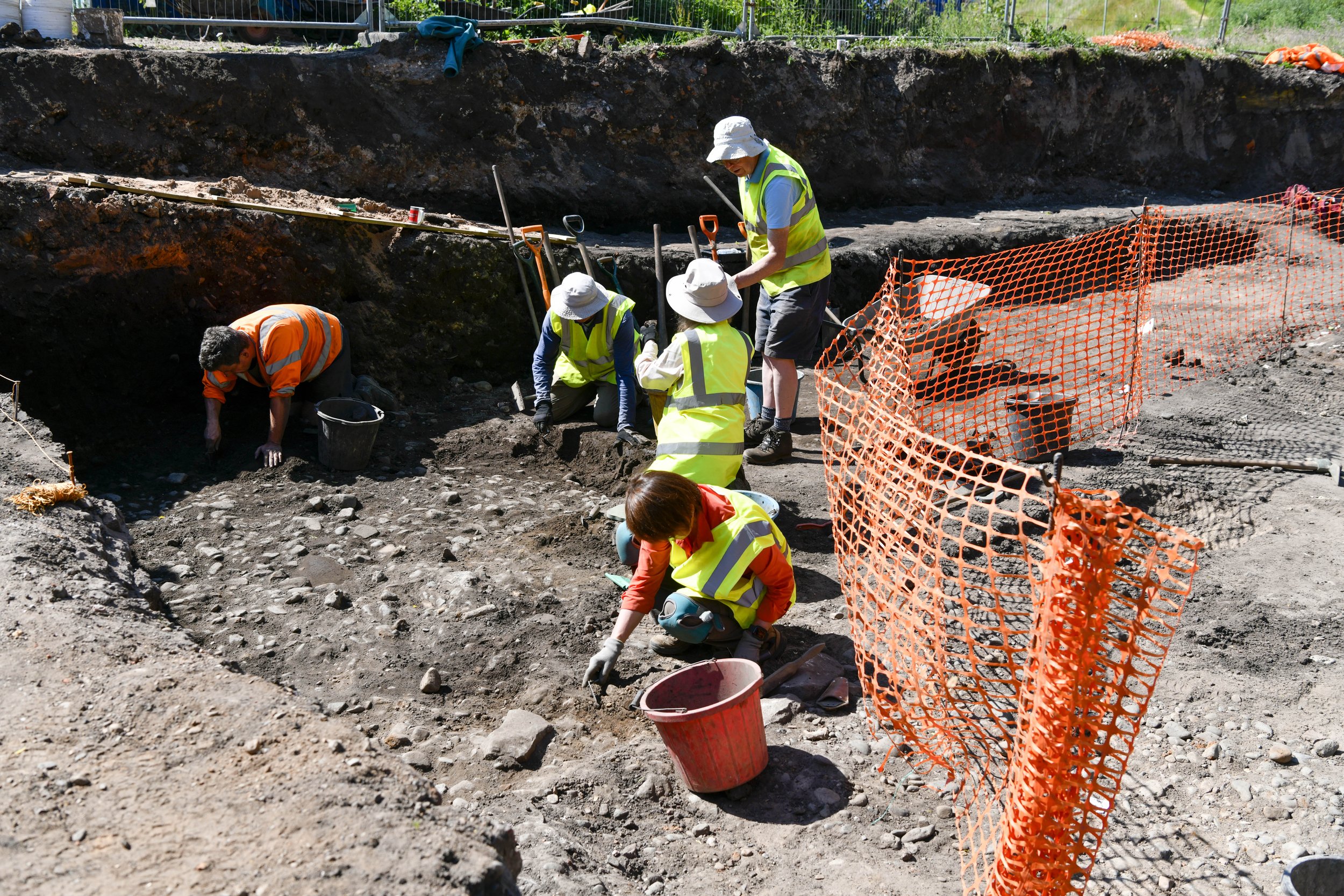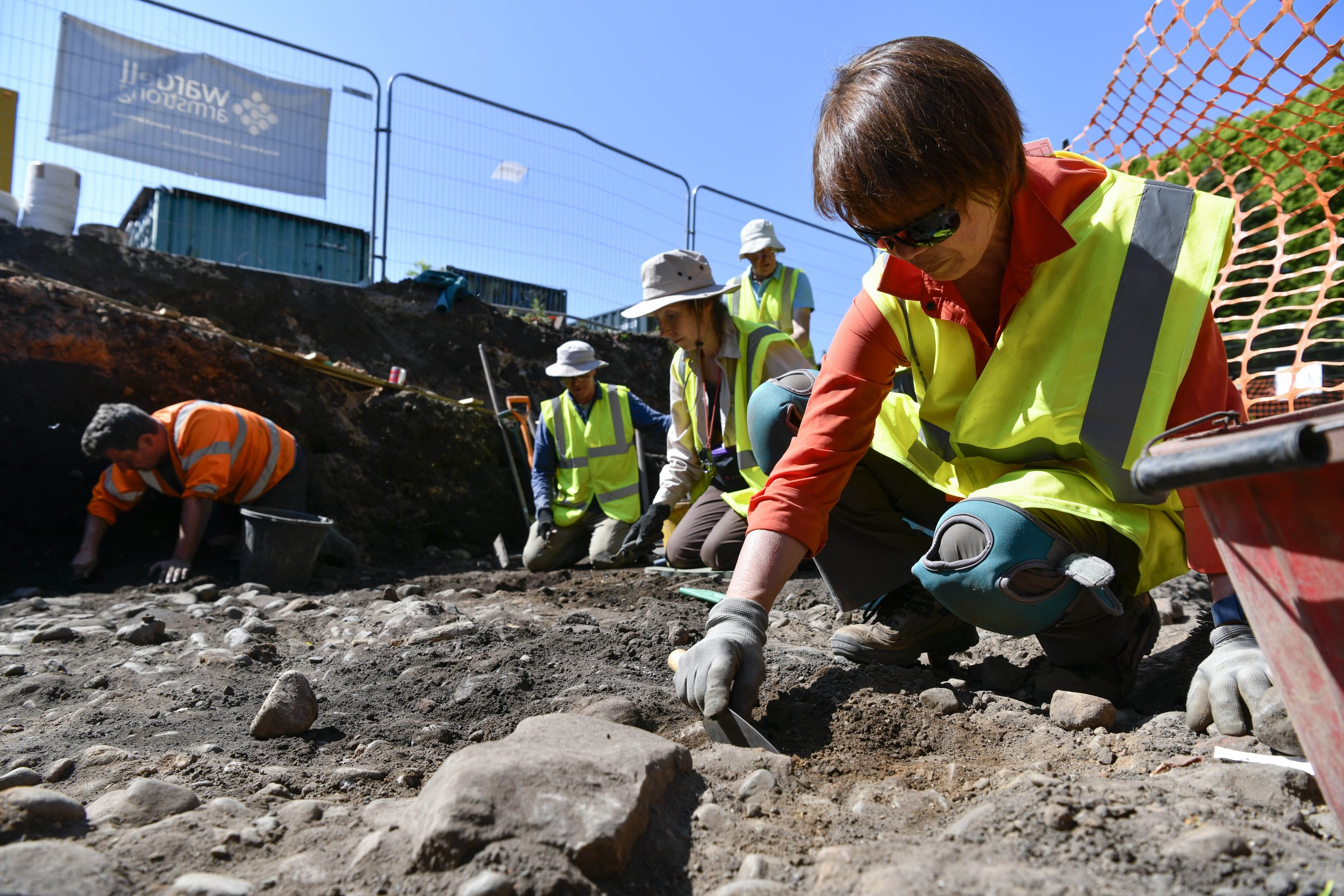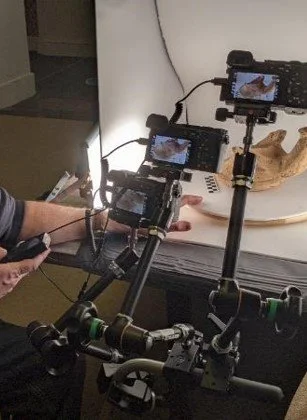
Find out about us…
Uncovering Roman Carlisle
“A couple of hours in, having given up hope of finding anything identifiable, out popped a Roman coin. The detail was remarkable. I was looking at the bust of a Roman emperor. I was the first person to hold and admire it in over 1600 years and I felt a real connection to the site as I looked down onto the archaeology unfolding in the trenches.”
These are the words from just one of the hundreds of volunteers who have taken part in Uncovering Roman Carlisle (URC). URC is an ongoing programme of community archaeology, engagement, and exhibitions, exploring the internationally significant Carlisle Roman Bathhouse on Hadrian’s Wall.
Our aim with URC is for a unique, free to access, urban excavation that can engage new audiences with heritage, enhance participants wellbeing and skills, and improves Carlisle for residents and visitors.
Read the story of how Carlisle’s Roman Bathhouse was discovered, and about the Uncovering Roman Carlisle Project here, and if you want to know a little more you can Meet the team.
The project has concluded the 2024 season. The award-winning Uncovering Roman Carlisle (URC) will return to Carlisle’s Roman Bathhouse for a mini-dig in February and March 2025.
We are currently working behind the scenes with Post Excavation, the program of talks and education visits, and planning for 2025!
It began when an archaeological investigation for a new flood proof cricket pavilion at Carlisle Cricket Club in 2017 led to the discovery of the bathhouse. A formerly unknown high-ranking imperial Roman bathhouse, and the largest building on Hadrian’s Wall.
Funded by Carlisle City Council (now Cumberland Council) and supported by local firm Storey Construction, archaeologists from Wardell Armstrong and volunteers uncovered remains of an underfloor heating system (hypocaust), and vast quantities of pottery, bone, and metal artefacts. Most significantly however was an exceptional engraved stone fragment, seemingly dedicated to the Empress Julia Domna (193 - 211 AD).
This discovery prompted a successful bid to the National Lottery Heritage Funded (NLHF) in 2021/2022, which became URC. Formed from a partnership of Carlisle Cricket Club, Cumberland Council, Wardell Armstrong LLP (the archaeological branch of a local multidisciplinary consultancy), and Tullie (Cumberland’s largest museum and art gallery) and supported by a large un-constituted group of volunteers - The Diggers.
As The Diggers, we have had the privilege to return every year since 2021 to further explore the site, and to exhibit the discoveries to the world
A short film created by volunteer Peter about the dig. Taken during the bath house excavations at Carlisle Cricket club between 2017 to 2023.
“This site is really waking people up to the exciting archaeology that there is here in Carlisle... helping people get in touch with that Heritage in a really physical way. I’ve had a lovely time!”
-
URC seeks to make heritage accessible to new audiences through a wide variety of activity and negating the typical barriers to participation. You can join us for weeks, a day, or an afternoon.
URC is an urban archaeological site available to be engaged with easily for free, on excellent transport links.
The Tullie led exhibitions give further opportunity to get involved. Using volunteer experience, URC volunteers create object biographies for the artefacts they had discovered and presented them through interpretation panels and Audio-Visual means. ‘Volunteer Voices’ are an integral part of the exhibitions’ ethos and interpretation.
-
The largest building on Hadrian’s Wall so far.
Subsequent discoveries by The Diggers has been essential in uncovering over 2,800 significant finds. Among these; 550+ Roman coins from centuries of occupation, 300+ hair pins, Imperial stamped tiles (tiles literally fit for an emperor), North African style vaulting tubes for roof construction, hundreds of stunning glass beads, gaming pieces, even a rare Roman doll’s foot. Significantly, 70 intaglios have been discovered in the drains. These are magnificently carved gemstones which dropped from Roman signet rings when the glue holding them melted in the bathhouse heat. It is the largest collection of intaglios from any singe context in the UK, discovered by volunteers aged 8 to 80.
Most recently in 2023 was the discovery of two monumental carved Roman heads by a volunteer on their first ever dig. These heads are utterly unique, and truly the find of a lifetime.
-
There have now been;
· 6 excavations.
· 3 exhibitions (one touring 10 venues across the area).
· 2800+ volunteer places.
· 11,000+ site visitors.
· 50+ talks to over 2600 people.
· 14,500+ visited Tullie’s two temporary exhibitions.
· 6,000+ visited the touring exhibition.
· 4,262 individuals have viewed the digitised artefacts on-line in the UK North-West Virtual Exhibition.
· 2,226 pupils participated in the learning program.
· International visitors from 40 countries visited or participated.
URC has highlighted Carlisle in international media. Most recently in Digging for Britain, with Professor Alice Roberts joining the volunteers. URC features in the Nat Geo documentary “Lost Mysteries of the Roman Empire.” This has allowed wider engagement and further, global appreciation of Carlisle as a visitor destination.
The Evaluation of the National Lottery Heritage Funded 2021 - 2022 project can be downloaded here.
-
We want URC to benefit people first, and to be open about the impacts of the Project.
We take volunteer surveys each year to gauge people’s experience and to learn. Thank you to all the volunteers who took time to respond.
A volunteer survey was distributed between May and September 2023 on Google Forms. Seventy nine valid responses came back – representing 21% of volunteers in 2023.
• 46% of volunteers at the 2023 excavation had never engaged in a heritage or archaeology project before – of those who had, 80% had been at a previous URC dig.
• 86% of volunteers reported increased archaeology and heritage skills.
• 90%+ reported improved wellbeing such as feeling less isolation and better health and fitness, as well as better mental health.
• 80%+ felt more pride in Carlisle and their area.
• 98% of volunteers reported they know more about Carlisle.
-
Uncovering Roman Carlisle was recognised for providing high quality engagement and the project won 3 national/international awards in 2023 and 1 in 2021. URC won awards from the Council for British Archaeology (CBA) and the Society for Museum Archaeology. The winning awards were:
- Public Dissemination or Presentation (sponsored by the Institute of Archaeologists of Ireland) – CBA
- Learning, Training, and Skills (sponsored by Archaeological Management Solutions - AMS) – CBA
- Society for Museum Archaeology Engagement Project of the Year Award.
- Council of British Archaeology and Marsh Charitable Trust’s Community Archaeology Project of the Year 2021, with a Project Archaeologist nominated for Community Archaeologist 2021.
-
Not only do we have the privilege of welcoming volunteers from across the world, stories covering the dig and it’s discoveries have been reported on in over 40 countries.
Throughout the EU, America, Commonwealth, and Asia. Reported on in international magazines, Nat Geo (France, Germany, Italy, UK, USA, Spain), Smithsonian Magazine, British Archaeology, BBC, ITV, ITV Borders, Radio Cumbria, Cumbria Crack, News and Star, an NHK (Japanese national broadcaster) documentary, BBC Digging for Britain with Alice Roberts, and National Geographic Documentary “Lost Mysteries of the Roman Empire.”
Archaeology engages and speaks to people across cultures and the globe.
-
You can see some of the objects from the dig anywhere in the world through these 3d scans.
Scans have been done very kindly by Commendium, Sewels, and Liverpool University working with Tullie and the volunteers.
This is one of the many ways people have so generously given their time and expertise to make URC better, and for the benefit of everyone. With a good 3d scan, anyone can study and appreciate these objects anywhere.
3d object scans – first link to the intaglio and selection of scanned objects and other artefacts.
Uncovering Roman Carlisle Project Partnership
-

Cumberland Council
Local Authority in the North West.
The Council since the discovery of the bathhouse has been assisting with funding applications, project management and finance, staff, publicity, and promotion.
-

Wardell Armstrong LLP
Archaeological branch of a local multidisciplinary engineering, environmental and mining consultancy. There from the start, and delivering the volunteer management and archaeological expertise with a skilled team whose background is in local archaeological community projects.
-

Tullie
Largest museum and art gallery in Carlisle, with programme of special exhibitions and events. Proudly caring for an almost 1 million-strong collection of objects that tell the story of Carlisle and Cumbria.
Tullie has delivered site engagement, award winning exhibitions, and travelling exhibitions, education, learning, and outreach.
-

Carlisle Cricket Club
Charity and highly supportive landowner with on-site facilities and support for the project.
The club ethos is to make cricket available to as many people as possible – whether training, playing, or simply wanting to spend an enjoyable afternoon watching a game at the idyllic Edenside ground.






